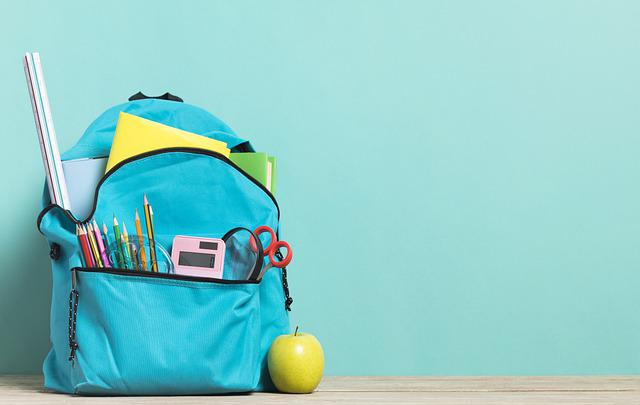The final week of summer is always filled with last minute shopping, organizing school supplies, planning lunches, and so on. Often, both parents and students get caught up in the race of getting everything ready that one of the most important parts of school year prep can easily be forgotten – the backpack. No, I am not referring to the trendy logo or character design your child has been begging for, but rather the physical makeup of the bag and how much is going inside.
According to the U.S. Consumer Product Safety Commission, an average of about 7,500 schoolkids under the age of 19 were treated for injuries due to backpacks between 2017-2019.
The first step in preventing more incidents like these is to learn how to identify if there’s a problem.
Look out for the following signs that your child’s backpack is too heavy:
- Your child struggles when getting the backpack on and off.
- Your child leans forward or to the side when wearing the backpack.
- Your child’s arms or legs are tingly or numb.
- Your child has red marks on the shoulders.
- Your child experiences pain when carrying the backpack.

Experts have been trying to spread awareness regarding the impact carrying a heavy load can have on a child’s physical development. Dr. David Gentile, an osteopath physician, warns that wearing backpacks that are too heavy can change the natural curve of the spine and prevent the ability to maintain proper posture. He points out that while we have made significant progress in encouraging good ergonomic practices at work with quality office chairs, standing desks, etc., the same must be addressed among students. For the healthiest results, he recommends choosing a lightweight backpack with wide shoulder straps, and to ensure even weight distribution by wearing the bag on both shoulders.
The following are some additional tips offered by physical therapists regarding backpacks:
- Choose a lightweight backpack with wide shoulder straps, a waist belt, and multiple compartments.
- Ensure the backpack rests in the middle of the back, no more than 4 inches below the waist line.
- Limit the contents to no more than 10%-15% of the child’s body weight (e.g. A child who weighs 100 pounds should not carry a backpack that weighs more than 10-15 pounds).
- Distribute books and supplies among all the bag’s compartments, placing the heaviest items closest to the spine.
Keeping in mind the advice from the experts and knowing the warning signs should help families with a smoother back-to-school process. Best wishes for a successful school year!
